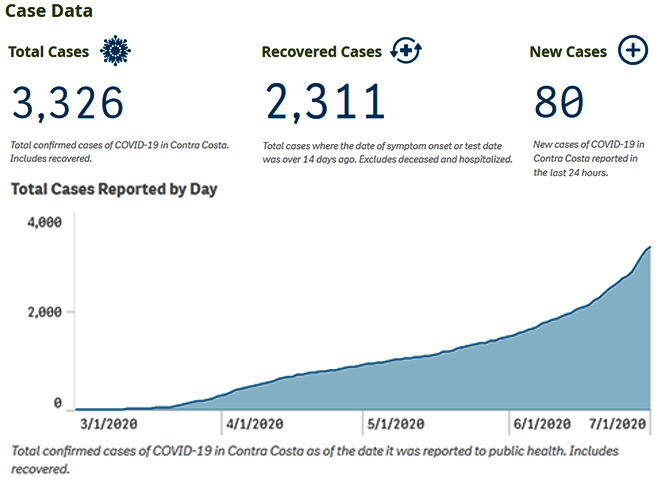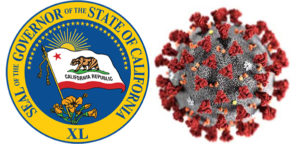PG&E funds Fire Victim Trust with $5.4 billion in cash and common stock representing 22.19% ownership stake in PG&E Corporation
PG&E remains focused on commitments to transform PG&E for the long term
Governor signs bill giving state protection ensuring PG&E will be a safer utility
 SAN FRANCISCO, Calif. — PG&E Corporation (the “Corporation”) and Pacific Gas and Electric Company (the “Utility,” together “PG&E”) announced Wednesday, July 1, 2020, that PG&E has emerged from Chapter 11, successfully completing its restructuring process and implementing PG&E’s Plan of Reorganization (“Plan”) that was confirmed by the United States Bankruptcy Court on June 20, 2020.
SAN FRANCISCO, Calif. — PG&E Corporation (the “Corporation”) and Pacific Gas and Electric Company (the “Utility,” together “PG&E”) announced Wednesday, July 1, 2020, that PG&E has emerged from Chapter 11, successfully completing its restructuring process and implementing PG&E’s Plan of Reorganization (“Plan”) that was confirmed by the United States Bankruptcy Court on June 20, 2020.
“Today’s announcement is significant for PG&E and for the many wildfire victims who are now one step closer to getting paid. Compensating these victims fairly and quickly has been our primary goal throughout these proceedings, and I am glad to say that today we funded the Fire Victim Trust for their benefit,” said Interim Chief Executive Officer, PG&E Corporation, Bill Smith. “This is an important milestone, but our work is far from over. Our emergence from Chapter 11 marks just the beginning of PG&E’s next era—as a fundamentally improved company and the safe, reliable utility that our customers, communities and California deserve.”
PG&E’s emergence from Chapter 11 is an important milestone on several fronts:
- PG&E has implemented the settlement and resolution of all wildfire claims pursuant to the Plan;
- PG&E has elected to participate in the State’s go-forward wildfire fund;
- PG&E Corporation has seated its new Board of Directors;
- PG&E is moving forward with commitments regarding its governance, operations, and financial structure to further prioritize safety; and
- As a result of the Chapter 11 proceedings, PG&E has retired expensive, high-coupon debt and replaced it with lower-cost debt, yielding significant annual savings for customers over the duration of the debt, estimated to be approximately $250 million annually.
Payment of Wildfire Settlements
Pursuant to the Plan—which was confirmed by the Bankruptcy Court, approved by the California Public Utilities Commission, and accepted by more than 85% of fire victims who cast votes on it—all negotiated settlements of wildfire claims have been implemented as provided in the Plan.
In accordance with the Plan, PG&E has now funded the Fire Victim Trust established to satisfy the claims of individual wildfire victims and others. The Fire Victim Trust funding schedule is as follows: $5.4 billion in cash on the Plan effective date, which was July 1, 2020; an additional $1.35 billion in cash in two installments in 2021 and 2022; PG&E Corporation common stock on the Plan effective date representing 22.19% of the outstanding common stock as of such date (subject to potential adjustments); plus certain other rights. A $700 million payment scheduled for 2022 will be accelerated if the CPUC approves the rate-neutral securitization application PG&E filed on April 30, 2020.
The Fire Victim Trust will be administered by the Fire Victim Trustee and Claims Administrator, both of whom have been approved by the Bankruptcy Court. Neither the Trustee, the Hon. John K. Trotter (Ret.), nor the Claims Administrator, Cathy Yanni, is associated with PG&E Corporation or the Utility. The Fire Victim Trust is solely responsible for administering, reviewing and satisfying all Fire Victim Claims. The Fire Victim Trust has adopted claims resolution procedures for the administration and resolution of Fire Victim Claims. Neither PG&E Corporation nor the Utility will have any role or responsibility in the administration of the Fire Victim Trust. The Fire Victim Trust’s website, which is maintained by the Claims Administrator, can be found at www.firevictimtrust.com.
In addition to funding the Fire Victim Trust, PG&E has also now funded two additional wildfire settlements, paying approximately $1 billion to satisfy the wildfire claims of certain cities, counties, and other public entities, and paying an $11 billion settlement to insurance companies and other entities that paid claims by individuals and businesses related to wildfires in recent years.
Participation in State Wildfire Fund
Today’s announcement also confirms PG&E’s participation in California’s go-forward wildfire fund established by AB 1054. PG&E today deposited approximately $5 billion in the Wildfire Fund, representing PG&E’s initial and first annual contributions.
New Board of Directors
As announced last month, PG&E Corporation’s newly appointed Board of Directors is now officially in place along with the Corporation’s new Interim CEO, Bill Smith, who officially took over from outgoing CEO, Bill Johnson, effective July 1, 2020. The new Board consists of 14 members, 11 of whom are new. The Board members bring substantial expertise in key areas including utility operations and management, safety and environment, risk management, customer engagement, innovation and technology, regulatory affairs (state and federal), audit and finance, corporate governance, nuclear operations and decommissioning, and human capital and executive compensation. In addition, six of the 11 new directors are from California and have made their careers in the state, gaining extensive knowledge of the communities PG&E serves and the political, social, and physical environment in which PG&E operates.
“We know that actions speak louder than words. As new Interim CEO and on behalf of PG&E’s newly appointed Board, I can assure you we are fully committed to continuing to implement comprehensive and meaningful changes to position PG&E for the long term,” said Smith.
Implementation of Plan Commitments to Further Enhance Safety and Improve PG&E’s Ability to Serve its Customers and Communities for the Long Term
As part of its Plan, PG&E made a series of commitments, some of which are already underway, regarding its governance, operations, and financial structure, all designed to further prioritize safety. PG&E made these commitments working with the Governor’s Office and incorporating guidance from CPUC President Batjer, which was included in the full Commission’s approval of the Plan.
The commitments include:
- Supported the CPUC’s enactment of measures to strengthen PG&E’s governance and operations, including enhanced regulatory oversight and enforcement that provides course-correction tools as well as stronger enforcement if it becomes necessary;
- Began hosting a state-appointed observer to provide the state with insight into PG&E’s progress on safety goals;
- Appointing an independent safety monitor when the term of the court-appointed Federal Monitor expires;
- Establishing newly expanded roles of Chief Risk Officer and Chief Safety Officer, with both reporting directly to the PG&E Corporation CEO;
- Formed an Independent Safety Oversight Committee to provide independent review of operations, including compliance, safety leadership, and operational performance;
- Assumed all collective bargaining agreements with labor unions, pension obligations, and other employee obligations, and all power purchase agreements and Community Choice Aggregation servicing agreements;
- Reformed executive compensation to further tie it to safety performance and customer experience;
- A commitment that PG&E Corporation will not reinstate a common stock dividend until it has recognized $6.2 billion in non-GAAP core earnings;
- Filed a proposal with the CPUC requesting a rate-neutral $7.5 billion securitization transaction after PG&E emerges from Chapter 11 in order to finance costs in an efficient manner that benefits customers and accelerates payment to wildfire victims; and
- Committing not to seek recovery in customer rates of any portion of the amounts that will be paid to victims of the 2015, 2017, and 2018 wildfires under the Plan when PG&E emerges from Chapter 11 (except through the rate-neutral securitization transaction).
Also on July 1, 2020, PG&E implemented the Noteholder Restructuring Support Agreement including implementation of the debt exchange, the reinstatement and collateralization of certain debt, and payment of accrued interest under the Plan. The exchange and reinstatement of debt and distributions of accrued interest to noteholders will be completed as soon as practicable. Questions can be directed to PG&E’s administrative agent, Prime Clerk LLC, by emailing pgeballots@primeclerk.com. More information can also be found at https://restructuring.primeclerk.com/pge/.
Forward-Looking Statements
This news release includes forward-looking statements that are not historical facts, including statements about the beliefs, expectations, estimates, future plans and strategies of PG&E Corporation and Pacific Gas and Electric Company, including but not limited to, statements about the Fire Victim Trust, implementation of commitments made in connection with the Plan, including governance, operational and financial commitments, estimated annual cost savings to customers resulting from emergence funding, and commitments and expectations, including timing, related to the payment of any dividends. These statements are based on current expectations and assumptions, which management believes are reasonable, and on information currently available to management, but are necessarily subject to various risks and uncertainties. In addition to the risk that these assumptions prove to be inaccurate, factors that could cause actual results to differ materially from those contemplated by the forward-looking statements include factors disclosed in PG&E Corporation and Pacific Gas and Electric Company’s joint annual report on Form 10-K for the year ended December 31, 2019, their joint quarterly report on Form 10-Q for the quarter ended March 31, 2020, and their subsequent reports filed with the Securities and Exchange Commission (the “SEC”), which are available on PG&E Corporation’s website at www.pgecorp.com and on the SEC website at www.sec.gov. Additional factors include, but are not limited to, those associated with the Chapter 11 cases of PG&E Corporation and Pacific Gas and Electric Company that commenced on January 29, 2019. PG&E Corporation and Pacific Gas and Electric Company undertake no obligation to publicly update or revise any forward-looking statements, whether due to new information, future events or otherwise, except to the extent required by law.
Governor signs bill giving state protection ensuring PG&E will be a safer utility
Following 18 months of unprecedented state intervention to transform PG&E and put safety, reliability and its customers at the center of its business model, on Tuesday, Governor Gavin Newsom signed SB 350, which protects California by giving the state the authority to hold PG&E accountable if the company fails to adhere to public safety policies, and to put safety, reliability and its customers at the center of its business model.
SB 350 builds on the framework set up by AB 1054, which was signed in July 2019, as well as on requirements set in motion by the California Public Utilities Commission (CPUC), the bankruptcy court and most importantly, by the Governor’s push for fundamental changes to transform PG&E into a utility that is reliable and accountable to its customers and to all Californians.
“No more business as usual for PG&E,” said Governor Newsom. “As we head into wildfire season amid a pandemic, Californians need to have confidence that their utility is focused on customer safety – preventing wildfire sparks and making critical safety upgrades. SB 350 marks a critical step in the transformation of PG&E into a utility that is accountable to those it serves – the people of California. I would like to recognize and thank the Legislature for taking action on this important legislation.”
SB 350, by Senator Jerry Hill (D-San Mateo), is being signed one day before PG&E is expected to conclude the bankruptcy case it filed in January 2019. The state won key victories in the company’s reorganization plan as a result of its intervention. These included sweeping governance and operational reforms, including a newly constituted board of directors, and billions of additional benefits to ratepayers, victims and the people of California. The state’s involvement also ensured that the company emerged from bankruptcy in a position to make massive upgrades necessary to deliver safe, reliable, clean electricity, and to swiftly compensate victims.
The California Public Utilities Commission approved PG&E’s bankruptcy plan on May 28 in a decision that placed enforceable requirements on PG&E to meet the mandates of AB 1054.
About PG&E Corporation
PG&E Corporation (NYSE: PCG) is a holding company headquartered in San Francisco. It is the parent company of Pacific Gas and Electric Company, an energy company that serves 16 million Californians across a 70,000-square-mile service area in Northern and Central California. Each of PG&E Corporation and the Utility is a separate entity, with distinct creditors and claimants, and is subject to separate laws, rules and regulations. For more information, visit pgecorp.com.












 SAN FRANCISCO, Calif. — PG&E Corporation (the “Corporation”) and Pacific Gas and Electric Company (the “Utility,” together “PG&E”) announced Wednesday, July 1, 2020, that PG&E has emerged from Chapter 11, successfully completing its restructuring process and implementing
SAN FRANCISCO, Calif. — PG&E Corporation (the “Corporation”) and Pacific Gas and Electric Company (the “Utility,” together “PG&E”) announced Wednesday, July 1, 2020, that PG&E has emerged from Chapter 11, successfully completing its restructuring process and implementing 



 SACRAMENTO — On Tuesday, June 30, 2020 California Governor Gavin Newsom issued an executive order extending authorization for local governments to halt evictions for renters impacted by the COVID-19 pandemic, through September 30. Currently Contra Costa County’s urgency ordinance preventing evictions and rent increases expires on July 15.
SACRAMENTO — On Tuesday, June 30, 2020 California Governor Gavin Newsom issued an executive order extending authorization for local governments to halt evictions for renters impacted by the COVID-19 pandemic, through September 30. Currently Contra Costa County’s urgency ordinance preventing evictions and rent increases expires on July 15.












